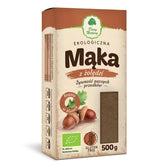A fruit with power! Avocado: nutritional properties and ideas for using it in the kitchen
CONTENTS
Avocado ! A fruit that has recently caused considerable controversy. On the one hand, it's become very fashionable. On the other hand, its cultivation requires vast amounts of water, which has a negative impact on the environment. One thing is certain: avocados are a nutritional bomb. Read the following article to learn about their properties and their uses.
Avocado – nutritional properties
Avocados are becoming increasingly popular in our country. It's no wonder, given their numerous health benefits. Why should you eat avocados?
The avocado is an unusual fruit because, unlike most other fruits, which contain primarily carbohydrates, it consists primarily of fat. These include very healthy monounsaturated fatty acids and polyunsaturated omega-3 and omega-6 fatty acids. It is also rich in plant sterols. Thanks to its content of these compounds, avocados are used to prevent and treat lifestyle diseases such as diabetes, heart disease, high cholesterol, and high blood pressure.
In addition to healthy fats, avocados owe their health-promoting properties to their high content of micro- and macroelements: potassium, copper, phosphorus, magnesium, and iron. It is also rich in vitamins C, E, A, K, and B, especially folic acid.
Despite all the benefits of avocados, it's important to remember that they're high in calories, especially for a fruit. 100g contains about 160 kcal, meaning one avocado can contain up to 250 kcal. These aren't empty calories. In addition, we're providing ourselves with many valuable nutrients. However, it's worth controlling the amount of avocado you eat. This is especially important for dieters. Eating the whole fruit can easily exceed their calorie intake. However, considering their calorific value, they're still worth including in a weight-loss diet because, in addition to their health-promoting properties, they also provide a long-lasting feeling of satiety.
How to choose a good avocado?
Avocados are green fruits with a large seed inside. Various varieties of avocados are available in stores and bazaars. The most popular are Hass avocados—darker with a thicker skin—and Fuerte avocados—lighter with a thinner skin.
To enjoy both its health and healing properties and its delicious taste, it's important to know how to choose a good avocado. To do this, hold the fruit in your hand and squeeze it very gently. If it's hard, it won't be tasty. The fruit may ripen over time, but some aren't particularly suitable for this purpose. Avocados shouldn't be too soft unless you plan to use them the same day. Otherwise, they may no longer be edible after a few days. The texture of the avocado should therefore be neither hard nor too soft. After shopping a few times, you'll surely quickly discover which fruits are the tastiest.
It's also worth paying attention to the color of the avocado skin . While the intensity of the color largely depends on the fruit variety, it's important to check that the surface isn't covered with dark spots. Most often, the avocado begins to darken at the tip. This usually means the fruit is already overripe or at least beginning to overripe.
What can you use an avocado for?
If you've never tried it, you might be wondering how to eat an avocado . Its flavor may seem vague at first. Some say it's tasteless. However, if you choose the right fruit—ripe but not overripe—and give it a chance, you'll soon enjoy its delicate nutty flavor and aroma.
Avocado recipes are generally easy to prepare. Avocado lovers slice and saute them. However, if you want to use them in dishes, the most popular is guacamole—a Mexican avocado paste, usually with the addition of garlic, lime, and salt. Sliced avocados enrich any salad with additional nutritional value and flavor. It's also a good idea to add avocado to a smoothie, such as one with banana and yogurt. This makes it creamier.
Many people, especially those concerned about cardiovascular disease prevention, use avocado instead of butter. To make avocado butter, simply mash the ripe fruit with a fork. Optionally, you can lightly salt it and spread it on bread instead of butter or margarine. Avocado can also successfully replace mayonnaise in salads. Here, too, simply mash it, or, if you prefer a perfectly smooth consistency, blend it and mix it with the other ingredients.
THE PUBLISHER'S CHOICE
Dried plums 1 kg BIOGO
- €7,01
- €7,01
- Unit price
- / per
Dried White Mulberries 500 g ORGANIC
- €5,84
- €5,84
- Unit price
- / per
Almonds 1 kg BIOGO
- €11,69
- €11,69
- Unit price
- / per
Cranberries sweetened with apple juice organic 1 kg BIOGO
- €16,37
- €16,37
- Unit price
- / per
Dried dates 1 kg BIOGO
- €4,21
- €4,21
- Unit price
- / per
Unpeeled buckwheat groats 1 kg BIOGO
- €2,81
- €2,81
- Unit price
- / per
Walnuts 800 g BIOGO
- €8,65
- €8,65
- Unit price
- / per
Peeled sunflower seeds 1 kg BIOGO
- €3,04
- €3,04
- Unit price
- / per
PULLED ORGANIC SUNFLOWER SEEDS 1 KG BIOGO
- €4,44
- €4,44
- Unit price
- / per












































































































































